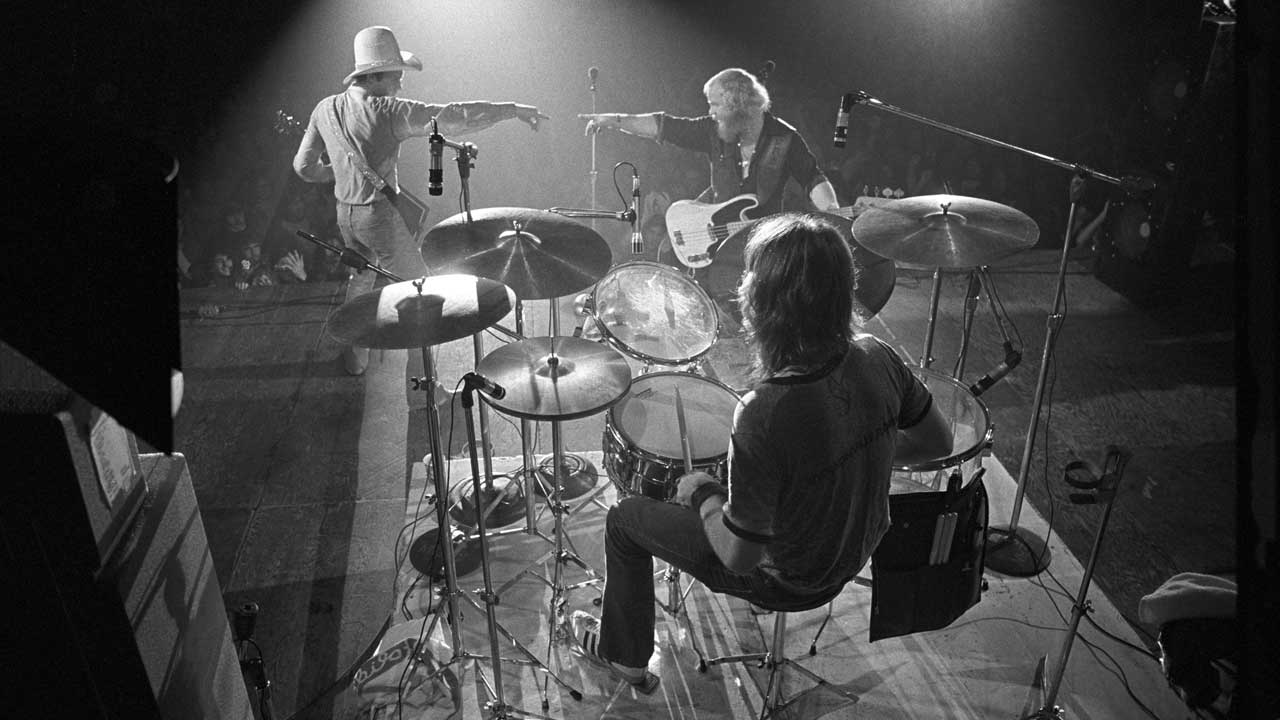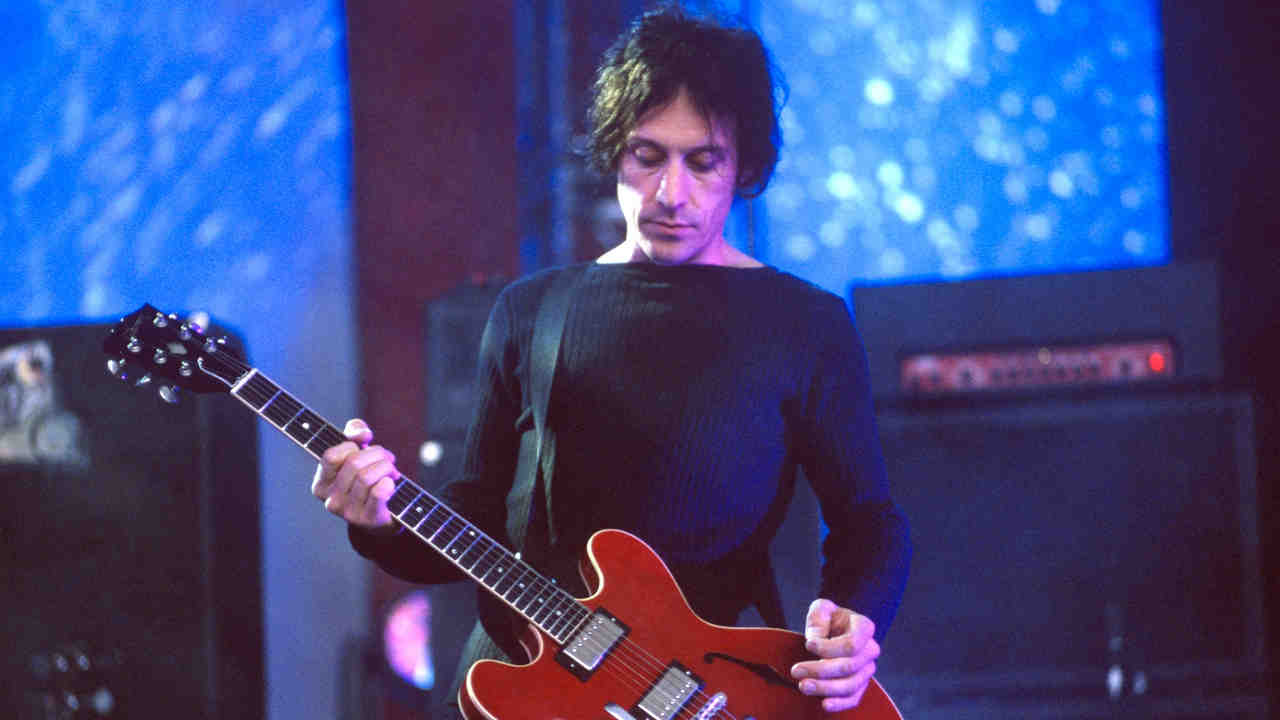"Saucy enough to flavour a thousand barbecues": How a fabled Texan brothel inspired a ZZ Top classic
Celebrating a real-life Texan brothel, the visiting of which was in its day "a rite of passage", La Grange is still one of ZZ Top's best-loved songs and a must-play at shows

Usually it’s a chorus, an individual performance or even a title that bestows immortality upon a particular song or track. In the case of ZZ Top’s La Grange, it was Billy Gibbons’s lascivious cry of “Have mercy!” followed by a deep a growl of “a how how how how”, delivered over a gently picked riff saucy enough to flavour a thousand barbecues, that handed the Texan trio their first significant hit; a track that has now racked up more than 170 million YouTube plays.
Now a well-aged 50 years old, La Grange first appeared on ZZ Top’s 1973 third album, Tres Hombres. The song celebrated a real-life brothel known as The Chicken Ranch, open from 1905 to 1973 and located on the outskirts of the Texan town after which the song was named. The Chicken Ranch went on to become the subject of a book called The Best Little Whorehouse In Texas, which was later made into a film (starring Dolly Parton).
Regardless of how much the bordello has now been absorbed into popular culture, when talking to Billy Gibbons about the song you have to wonder whether or not he paid a visit to the establishment.
“Unabashedly, the answer is yes,” he says with a chuckle. “For a young man in those days, it was a rite of passage. You had to go to the infamous Chicken Ranch of La Grange. You know, photos taken in its heyday still float around. It wasn’t much to talk about from an architectural standpoint, but the place was well kept and well-managed. [The Madam] Miss Edna was always ready to crack the whip, which tended to keep everybody in line. I’m told that during the Great Depression [from 1929 to 1939] you could claim house favours by bringing along a real chicken, and that’s where the place got its nickname.
“However,” Gibbons adds in an obviously mock-serious tone, “I may be saying all of the above in order to bring legitimacy to the song.”
Gibbons recalls that when he was growing up, the older guys he knew would talk about La Grange.
“One of them even called it the eighth wonder of the world,” he states. So the place was firmly on his radar when ZZ Top began preparing to record Tres Hombres. Gibbons doesn’t attempt to deny that La Grange’s opening riff owes a debt to Boogie Chillen, an iconic blues song recorded by John Lee Hooker in 1948.
Sign up below to get the latest from Classic Rock, plus exclusive special offers, direct to your inbox!
“That’s part of our fascination with carrying on the inimitable Texas shuffle,” he explains. “You can also hear it in Thunderbird [from 1975’s Fandango!], but the shuffle to La Grange became a tradition in its own right, and we have played it at every ZZ Top show since 1973. There are no plans to dismiss it, either. It brings a smile to those faces every night.
“That riff has remained a staple of that blues-rock tradition,” he adds proudly. “Its roots can be traced all the way back to the beginnings of country music, hillbilly, even gospel music, but it’s so identifiable. Each night when we begin that song, everybody has a little bit of a boogie.”
Gibbons also doesn’t mind admitting that his cackle of “a how how how how” was borrowed from another John Lee Hooker song, 1961’s Boom Boom, later popularised by The Animals. Nothing is original in rock’n’roll any more, and Gibbons is equally blasé about the fact that Kid Rock modelled his song Son Of Detroit on La Grange.
“Yes indeed,” Gibbons affirms. “In fact, before he died [in 2021] the late, great James Harman, who contributed some bluesy harmonica to a couple of ZZ Top albums once played me a track from the late 1940s that preceded anything in that style that we’d ever heard. It was an exact blueprint for what you’d now call the famous boogie shuffle. Yeah, it goes back that far, and it’s so infectious it will never go away, brother.”
Gibbons remains proud that La Grange was covered by the country singer and songwriter Hank Williams Jr, who recorded it for his 1983 album Strong Stuff. “Man, he gave it a good blast,” he enthuses.
Perhaps surprisingly, Gibbons admits that upon completion of the recording of La Grange at Robin Hood Studios in Tyler, Texas, none of the band’s inner circle – trusty producer and manager Bill Ham, bassist Dusty Hill or drummer Frank Beard – had any real inkling of how important the track would become.
“We certainly enjoyed laying down the music track, and I had composed the lyrics after reading a book by an author from the UK called Dave Marsh,” he says. “It was an overview of the career of Buddy Holly, and one of its chapters zeroed in on the famous song Peggy Sue Got Married. That book pointed out that the song ended with a question that did not rhyme. It was unusual for Buddy Holly, and that inspired me to write my own two closing lines in La Grange: ‘I hear it’s tight ’most every night, but I might be mistaken’. So thank you for that, Dave Marsh, and thank you Buddy Holly.”
When released as a single in 1973, La Grange reached just No.41 in the United States. In comparison to the band’s MTV-popularised era during the following decade, when Eliminator singles Gimme All Your Loving and Sharp Dressed Man brought the trio a whole new audience, such a chart placing seems fairly modest, although the popularity of La Grange and its parent album helped to bring ZZ Top gold albums in the USA and Canada for the first time. Equally important, a halfcentury of performing the song live has taught Gibbons of its true value.
“That song set us on the right path,” he concludes. “When asked for advice by our fans, we always say that a band should learn to play what it wants to hear. And that’s what happened with La Grange. We did that fifty years ago, and we still enjoy playing and hearing it. It’s not going away any time soon.”
Bill DeMain is a correspondent for BBC Glasgow, a regular contributor to MOJO, Classic Rock and Mental Floss, and the author of six books, including the best-selling Sgt. Pepper At 50. He is also an acclaimed musician and songwriter who's written for artists including Marshall Crenshaw, Teddy Thompson and Kim Richey. His songs have appeared in TV shows such as Private Practice and Sons of Anarchy. In 2013, he started Walkin' Nashville, a music history tour that's been the #1 rated activity on Trip Advisor. An avid bird-watcher, he also makes bird cards and prints.

